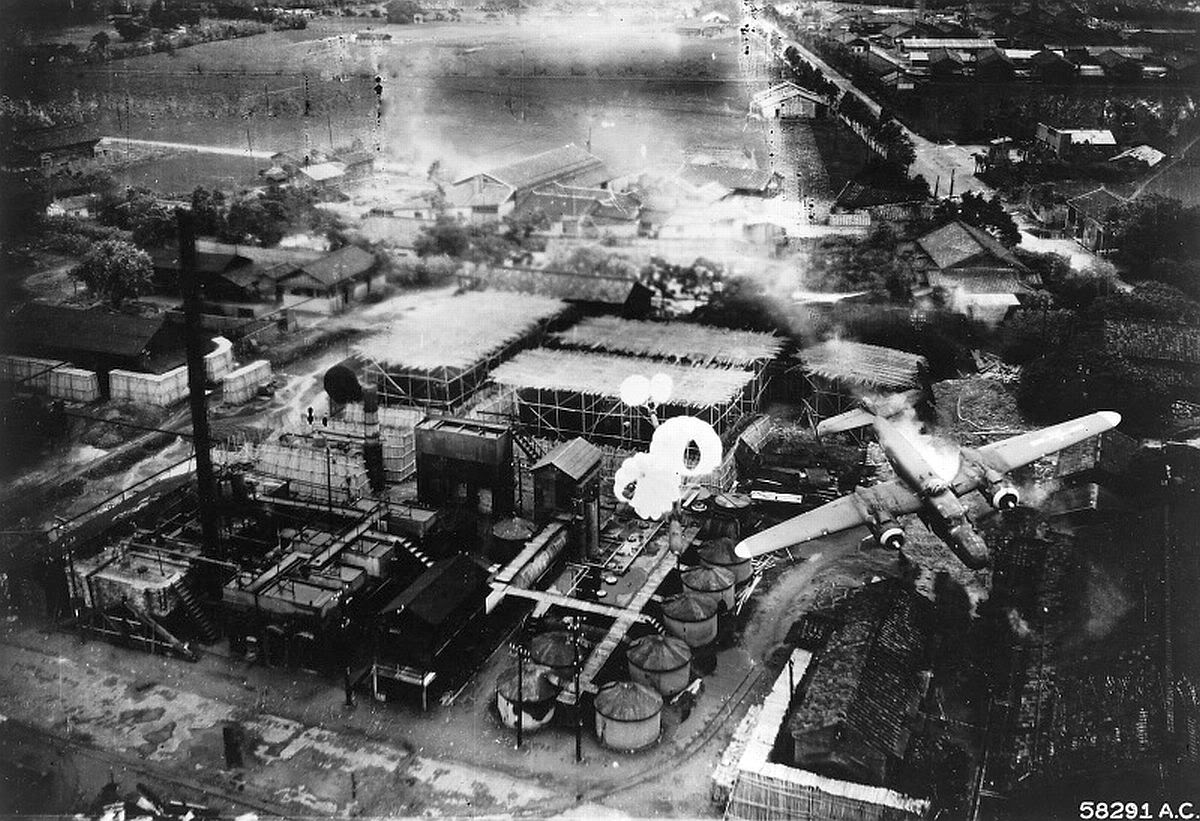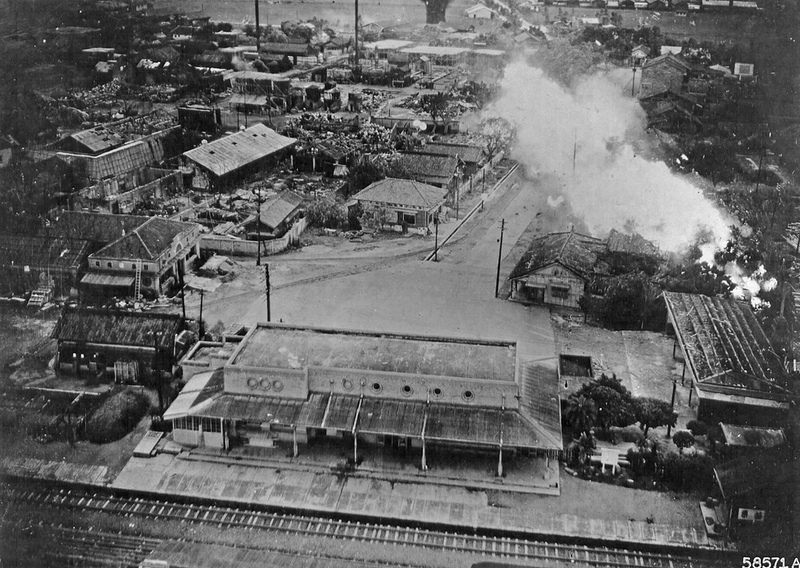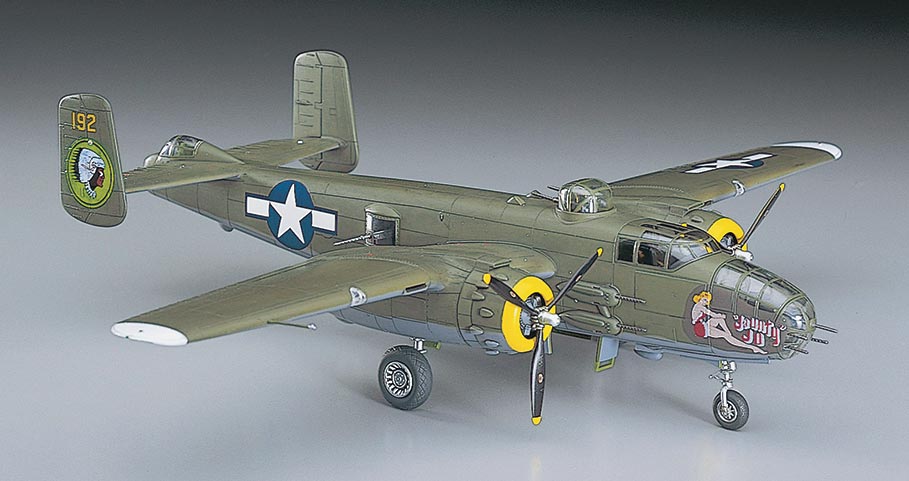Last Flight of the ‘Jaunty Jo’
- By Peter Harmsen
- 30 March, 2014
- 5 Comments
 On May 26, 1945, sixteen B-25J Mitchell bombers took off from their base in the Philippines, headed for Taiwan. They were from the 498th Bomb Squadron, part of the 5th Air Force’s 345th Bombardment Group, which had been stationed in the Philippines since November 1944, carrying out missions against shipping along the China coast as well as industrial and infrastructure targets in Taiwan.
On May 26, 1945, sixteen B-25J Mitchell bombers took off from their base in the Philippines, headed for Taiwan. They were from the 498th Bomb Squadron, part of the 5th Air Force’s 345th Bombardment Group, which had been stationed in the Philippines since November 1944, carrying out missions against shipping along the China coast as well as industrial and infrastructure targets in Taiwan.

‘Jaunty Jo’ crash scene near train station in the city of Miaoli
The day’s mission was a raid on the Byoritsu Refinery, located in the northwestern Taiwanese city of Miaoli. US intelligence, which had identified the refinery as “Target No. 85” on Taiwan, estimated that it produced 100,000 barrels of gasoline, kerosene and heavy oil annually. It was a target of some significance.
Among the American bombers heading across the sea towards Taiwan was B-25 no. 192, “Jaunty Jo”, piloted by Robert J. Knauf and with a total crew of five.
The 16 bombers approached the target almost grazing the treetops. They did so because of the nature of the bombs they were carrying: Parafrag bombs, designed to be dropped with great precision from low altitude, before detonating and breaking into smaller fragments. Parachutes delayed impact long enough for the aircraft to escape unharmed.
It was to be the last flight of the “Jaunty Jo.” As it released its parafrag bombs, the left side of the cockpit was hit by shrapnel, and a gaping hole opened next to the pilots. Possibly it sustained other damage as well. Trailed by a dense tail of smoke, the bomber crashed seconds later, killing all on board.

The ‘Jaunty Jo’ is enough of a legend to have been turned into a model kit by Japanese maker Hasegawa
The official explanation was that a camouflaged anti-aircraft battery near the refinery shot down the plane. However, the extremely low altitude also makes it possible that it was hit by parafrag bombs descending towards the ground after having been dropped by another bomber. Alternatively, fragments from exploding parafrag bombs could perhaps also be the explanation. The truth will probably never be known.
The tragic event was photographed from another plane taking part in the mission, providing a lasting testimony to the sacrifices that young men were forced to bring in the Pacific, even after the war in Europe was over.
Source: TaiwanAirBlog



 Copyright © 2024
Copyright © 2024
Have built a Revel 1/48 of Juanty Jo. Will always Revere those that perished!
Just picked up the kit and I’m looking forward to the build. I was researching the two offered paint/decal options. I like this one. Sad to read it’s demise.
I have the Revell 1/48 Jaunty Jo/Finito Benito Next Hirohito model
Just finished the Revell 1/48 model. Did not know the whole story until now. Very sad.
I own this model and thought it was made by revel